Tips and strategies to proactively anticipate TCPA updates

Major changes have rocked the lead generation and performance marketing industry with the recent reshaping of the Federal Communications Commission (FCC) TCPA with the new one-to-one consent rules.
Many companies find themselves seeking answers on how to maintain their businesses while staying compliant with this new scenario. ActiveProspect recently hosted a much-needed webinar “Don’t play the waiting game: Strategies for anticipating TCPA updates” discussing the implications of these changes and providing insight into these emerging challenges.
Our Director of Privacy, Security, and Compliance, Benjamin Farrar, and our Director of Professional Services, Michael Peronto, sat down with Alysa Hutnik, Partner, Privacy, Information Security, Advertising/Marketing Law at Kelley Drye & Warren LLP, and Jenny Wainwright, Senior Associate at Kelley Drye & Warren LLP.
Our expert panelists took center stage to detail and explain these significant developments, emphasizing the importance of anticipating The Telephone Consumer Protection Act (TCPA) updates and the requirements of the newly formed FCC rule on one-to-one consent.
Key trends about the FCC one-to-one consent rule
Urgency to keep track of all the changes
As Jenny points out, “ever since the FCC rolled out the one-to-one consent rule, it’s just been a ton of questions about implementation.”
According to her, it’s not only about adhering to FCC guidelines. The industry as a whole recognizes the immediate need to implement one-to-one consent measures, from telephone carriers to texting platforms.
Despite the technical timeline where the FCC’s rule doesn’t take effect until January 2025, the urgency to act is palpable due to the time required to experiment and implement these significant changes to standard business practices.
Moreover, the one-to-one consent rule is just one part of a broader wave of regulatory updates that began with the December order. This order marked the beginning of significant changes, quickly followed by the AI declaratory ruling and adjustments to the revocation of consent rules, each with its own deadline.
Below is a timeline with the main dates you should mark on your calendar.

With all these overlapping deadlines, it’s a complex landscape to navigate, highlighting the importance of staying on top of these evolving regulations.
Pressure to implement the changes sooner than required
As Alysa explains, from a business perspective, you might want more time to test the user flow for one-to-one consent, but there’s significant pressure from messaging and communication platforms who are being pressured by text and calls carriers – who in turn are pressured by the FCC – to tighten their controls against phishing, spam, robocalls, and other unwanted communications that are generating unusual traffic and numerous complaints.
Consequently, according to Alysa’s own experience, the one-to-one consent rule is being indirectly enforced by inquiry, reviews, and audits now . Auditors and platforms are proactively contacting their clients, scrutinizing elements like privacy policies, TCPA consent language, or URLs. They’re pointing out terms like “and affiliates” or “and marketing partners” linked in these documents, and although you might think compliance isn’t required until next year, they’re insisting on immediate action.
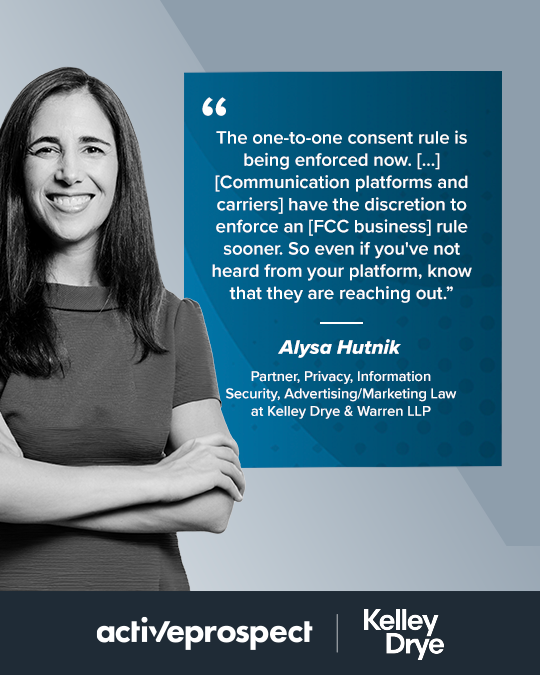
Let’s analyze a real case: Bradley vs. Dentalplans.com
In the spirit of putting things into action, Michael discussed an actual case that was recently taken to court: Bradley vs. Dentalplans.com.
Case background information
In November 2018, the plaintiff contacted Dentalplans.com to enroll in a dental savings plan. During the conversation, a company representative verified the plaintiff’s phone number and sought her consent for Dentalplans.com to reach out using an automatic dialing system (ATDS) or pre-recorded messages, among other disclosures.
The plaintiff inquired about the purpose of these automated calls, and the representative explained that they were intended to keep her updated on plan details and assured her that only Dentalplans.com would make such calls. The plaintiff consented to this arrangement and subsequently signed up for a Cigna dental discount plan via Dentalplans.com.
Almost a year later, Dentalplans.com contacted her to discuss details of her plan. During this call, the plaintiff indicated she did not wish to automatically renew her plan and was told she would be notified upon its expiration. However, she later received around 10 pre-recorded calls from Dentalplans.com, termed as “win-back” calls.
This led the plaintiff to file a lawsuit against Dentalplans.com and Cigna Health and Life Insurance Company, alleging violations of the TCPA.
The court’s opinion
The court determined that the calls made after the expiration of the plan, referred to as the “win-back” calls, were indeed telemarketing calls. This raised a crucial question: whether the TCPA disclosures provided during the initial call sufficiently met the standards for prior express written consent.
Moving to another aspect of the court’s decision, it was found that merely capturing or recording audio is insufficient to secure prior express written consent for the use of ATDS or pre-recorded messages under the TCPA. The court explained that the TCPA mandates specific disclosures to fulfill the requirement of prior express written consent, and these must align with the consumer disclosure provisions of the E-Sign Act, which stipulate that such disclosures be provided in writing.
However, the court noted in a footnote that the consumer’s signature and consent, as well as the content of the agreement, could still be obtained via voice recording. The only element that could not be captured through voice recording, according to this ruling, were the TCPA’s required disclosures.
Unpacking the case
As Alysa explains, this decision is quite recent and arrives at a time when many of us are considering how to adapt to the one-to-one consent requirement. Some methods include obtaining consent through a web flow, during a phone call, or on an inbound call. For instance, if you’re connecting a caller to an insurance partner during a call, that would be the moment to secure one-to-one consent for the partner you’re introducing.
This ruling challenges that approach. But why did this lawsuit arise in the first place? Here are some practical considerations from Alysa:
- The call in question occurred nearly a year after the initial contact. From a consumer protection perspective, unexpected calls can lead to confusion about the caller’s identity and are more likely to result in complaints. Therefore, managing the age of your contact list and establishing a reasonable period after which inactive numbers are no longer called can mitigate this risk.
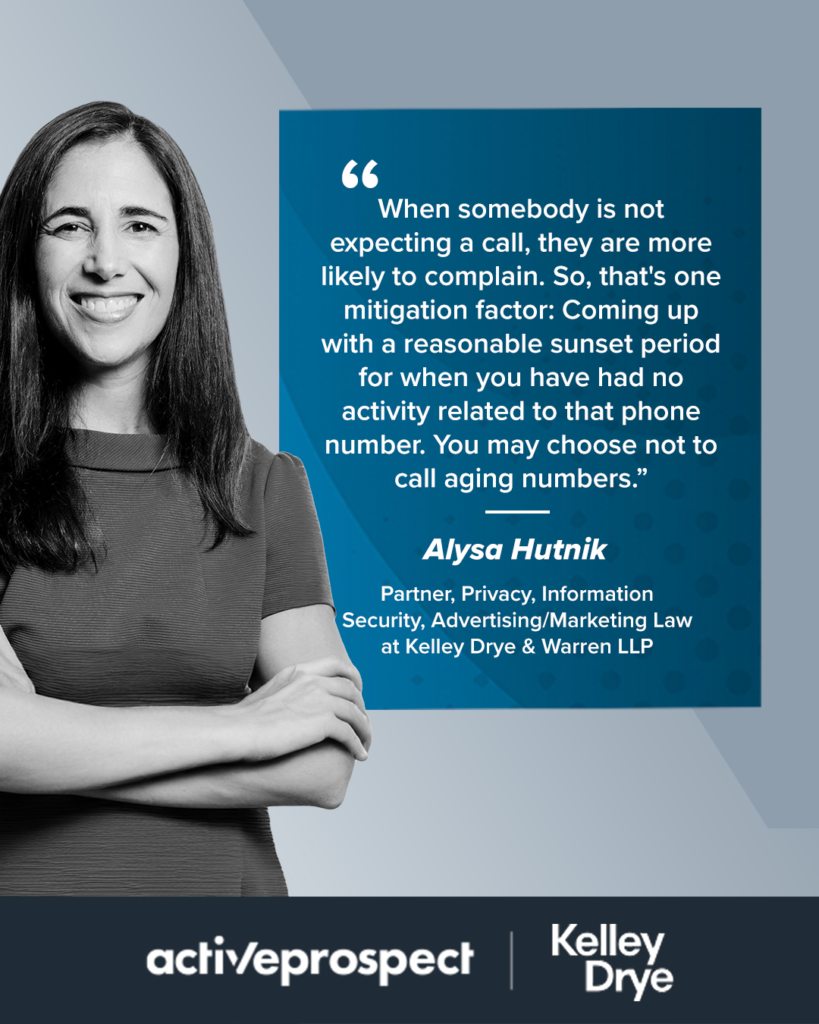
- The use of prerecorded messages significantly increases the likelihood of complaints. Avoiding such messages or reducing the frequency of calls might have prevented the escalation to a lawsuit. It’s crucial to differentiate between informational and telemarketing calls and to diligently scrub against your internal Do Not Call (DNC) list.
Given the broad definition of telemarketing, and the highly regulated nature of this field, it’s essential to have a robust process for classifying and handling calls as telemarketing.
Pro tip
Considering consumer expectations and legality about receiving written disclosures after the interactions, one strategy might be to send disclosures via text in real time or email before or during the call, allowing consumers to review the terms later if they choose.
This approach provides a way to maintain current practices with minimal changes. Looking ahead, as Alysa says, “we’re just moving in one direction. Everything is getting a little bit tighter, a little bit more rigorous. Making sure we are catering to each individual consumer and their expectations. And so I would just say this is why you have a pretty thoughtful comprehensive compliance program in the first instance.” This ensures that we meet individual consumer expectations and maintain compliance.
In agreement with Alysa, Jenny emphasizes how, following the recent FCC regulatory updates, obtaining consent has become more challenging.
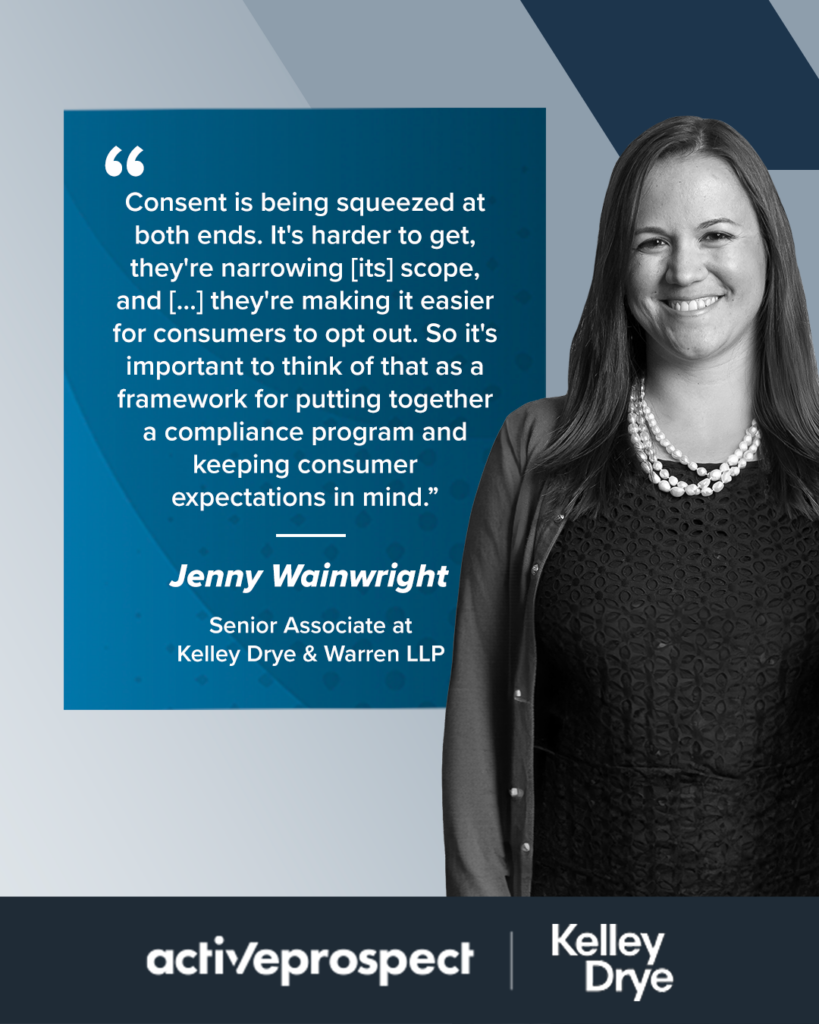
Some useful mitigation tactics for call centers
From the perspective of call centers, what are some strategies they can implement to ensure that disclosures are communicated accurately and that the customer’s consent is correctly interpreted?
Run continuous audits, show due diligence
Based on her personal experience, Alysa explains how call center employees often include younger individuals and experience high turnover rates. Therefore, how can you ensure they are successful? What processes are in place for these representatives? Are they using consistent scripts, and do you have dedicated teams handling specific tasks?
According to Alysa, it’s crucial to step into the shoes of these representatives to understand what supports their success and to establish a robust feedback system to verify that your program is functioning as intended.
Additionally, there is a growing demand from partners for proof of quality assurance. They want to see that these measures are actively being implemented. This accountability is likely to become a more common expectation. Demonstrating diligence in these areas can position your business as a trustworthy partner, enhancing your reputation and potentially leading to higher quality matches due to the competence of your team members.

Train your team on how to correctly dispose calls
As Michael suggests, training your agents on how to accurately log call dispositions is crucial. In many call centers, when a customer requests to be removed from a list, agents might incorrectly label it as “not interested,” “wrong number,” or sometimes not log the request at all, which is highly problematic.
Therefore, during your call center training sessions, it’s essential to emphasize that dispositions are directly linked to compliance practices. Agents must understand the significance of each category. As Michael suggests, incorporating role-playing exercises can be an effective way to ensure they handle dispositions correctly.
Another important aspect to consider, as Michael underscores, is that your dispositions also play a crucial role in your marketing and sales efforts. They can impact various metrics, including your contact rates and opt-out rates.
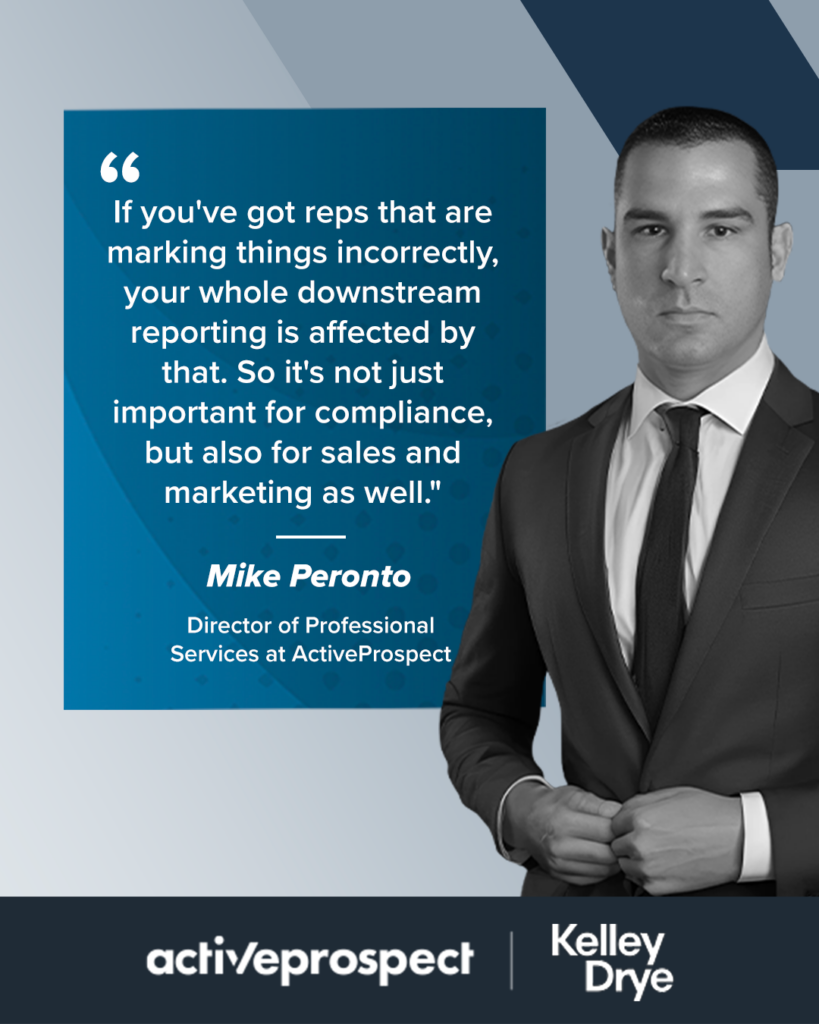
Be mindful of what you’re auditing for
As Alysa explains, the focus of your audits is also crucial, especially in call centers where regular audits are a standard business practice. However, it’s important to consider whether these audits are solely business-oriented or if they also account for recent legal developments that could impact the validity of the consent being obtained.
Given the constantly evolving nature of this legal area, it’s beneficial to establish a routine schedule to review all the checks in place – examining the audit processes, data retention policies, and training programs – to ensure they are updated in response to recent changes.
Additionally, navigating business challenges is part of the process. Not all partners or call centers will readily disclose detailed consent records without specific requests. It’s practical to think about when you might need access to these records and how you can maintain confidence in your auditing practices to ensure they are conducted correctly.
To this regard, Benjamin suggests you should view this as “an opportunity. Don’t view it as being adversarial, view it as ‘you’re developing a stronger relationship.’ There might be things they don’t realize that they’re not performing and it’s to help balance both sides. Not like, ‘I can’t believe I’m actually gonna have to ask them about their background procedures’ but ‘so we can build a stronger relationship together’ and not stub our toe in the dark when there’s something that we didn’t realize that the other party wasn’t doing.”
Final thoughts
Our webinar “Don’t play the waiting game: Strategies for anticipating TCPA updates” showed how the marketing industry should see these developments as a chance to enhance their communication strategies and start addressing these changes immediately.
Here are the main takeaways we were able to gather from this insightful discussion:
- Businesses shouldn’t wait until the last minute to address FCC one-to-one consent rules and TCPA regulations changes. Instead, they should be proactive and start preparing now.
- Businesses need to ensure they are complying with all the relevant regulations and requirements when obtaining prior express written consent, which differ depending on the method of communication and the nature of the consent.
- Businesses should keep consumer expectations and experience at the forefront of their considerations. This will not only help maintain trust and relationships with customers, but also assist in staying compliant with these changes.
Watch the entire episode now! As always, ActiveProspect is here to help you navigate these uncertain times with as much knowledge and understanding as possible. To stay in the loop about the latest industry happenings and never miss a TCPA, FCC, FTC update, make sure to subscribe to InsideCBM now! You’ll get all the updates you need, straight to your inbox.
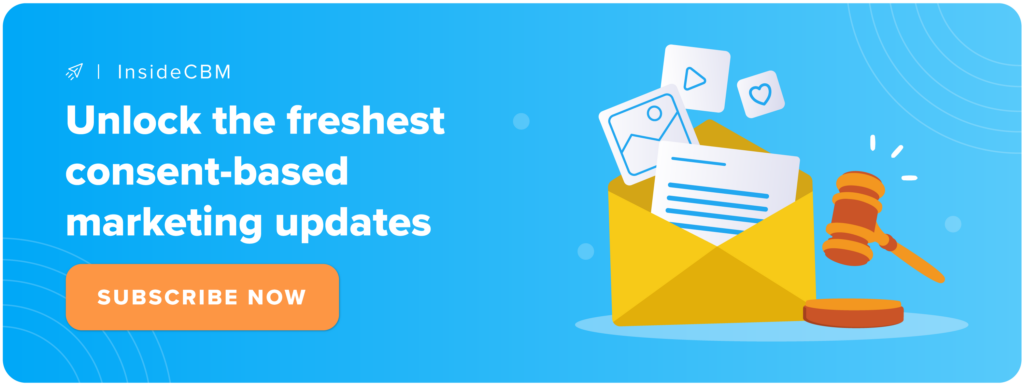
DISCLAIMER: This page and all related links are provided for general informational and educational purposes only and are not legal advice. ActiveProspect does not warrant or guarantee this information will provide you with legal protection or compliance. Please consult with your legal counsel for legal and compliance advice. You are responsible for using any ActiveProspect Services in a legally compliant manner pursuant to ActiveProspect’s Terms of Service. Any quotes contained herein belong to the person(s) quoted and do not necessarily represent the views and/or opinions of ActiveProspect.





